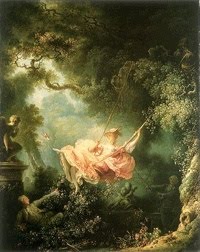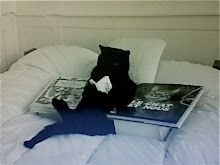It took me a long time to come to terms with Egon Schiele. Much of his art repelled me (still does, to be honest) because of its voyeurism and obtrusive sexualization of little girls.
Much of his art is like a magnet, though. There is an expressive economy of lines in his sketches: there always appears to be enough, though it seems he drew only what was absolutely necessary to make the image legible.
The perspective is often difficult to figure out--sometimes it seems we're looking at the figure from an uncomfortable position at the ceiling, sometimes it seems we're crouching on the floor--but we're always close, in the model's personal space. So close that it's possible to feel like an intruder in a Schiele painting.
When I found KatColorado's re-enaction of Schiele's Sitting Woman... on Flickr, it got me thinking about that problem of intrusiveness and of tableaux vivants (one of those pastimes I can never understand).
KatColorado repeats the brilliant composition, the pose, almost the same perspective. Maybe it's just my hopeless attachment to text but her brief description of how she went about the project sets it apart from Schiele's invitation to intrude.
I don't mean to go all Marie Bonaparte* on Schiele, but having read about his troubled relationship with his mother, his use of his sister Gerti and then later Wally Neuzil and the Harms sisters as models, I can't quite separate that knowledge from the violence in his representation of women. The photographer re-enacting the painting isn't putting herself just in the position of the model but in multiple roles at once. Unlike in the haunting description of tableaux vivants in The House of Mirth, the issue here is not exact embodiment of the figure in the painting but re-doing the painting. (So KatColorado can survive the experiment, unlike poor Lily Bart?)
It leaves me still not understanding tableaux vivants but more at ease with the masochistic appeal of Schiele's work. I like the photograph. If you know more projects of this kind, drop me a line.
 |  |
Egon Schiele: Sitting Woman With Legs Drawn Up (1917), originally uploaded by KatColorado[While the dead cities and dead children paintings are incredible in their own way, I have no idea how to weave them in here, so I bracket them for now. Voilá!]
*Marie Bonaparte was a disciple of Freud's and author of a psychoanalytical interpretation of the life and works of Edgar Allan Poe, notorious for its vision of art as symptom of the artist's psychological issues.







